Stable fly
Stomoxys calcitrans
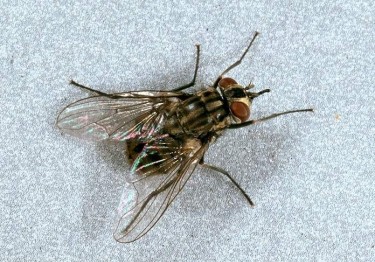
Stable fly is exposed as a great annoyance to livestock. Bites are extremely painful and the flies can be very persistent.
Stable fly
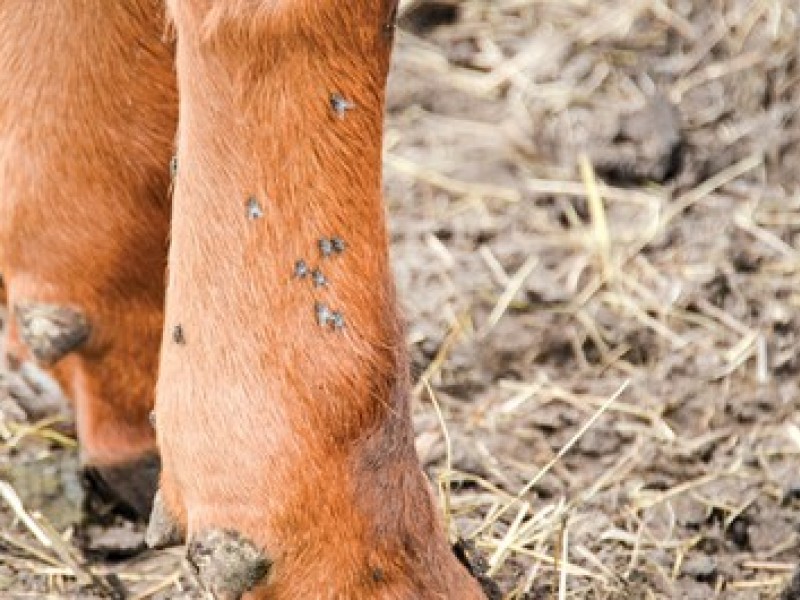
Life cycle
Female flies are ready to mate after 3-5 days following emergence. Once mated they can lay several clutches of eggs (around 80-100 eggs per clutch). For every clutch of eggs, a female fly requires a blood meal. A suitable breeding site for a stable fly is moist, decaying organic matter, for example hay, manure, and wood. Depending on the temperature, it normally takes 15-30 days for stable flies to develop from eggs to adults. Stable flies breed continuously in warm regions and can survive winters together with humans and livestock in protected, semi-heated substrates.
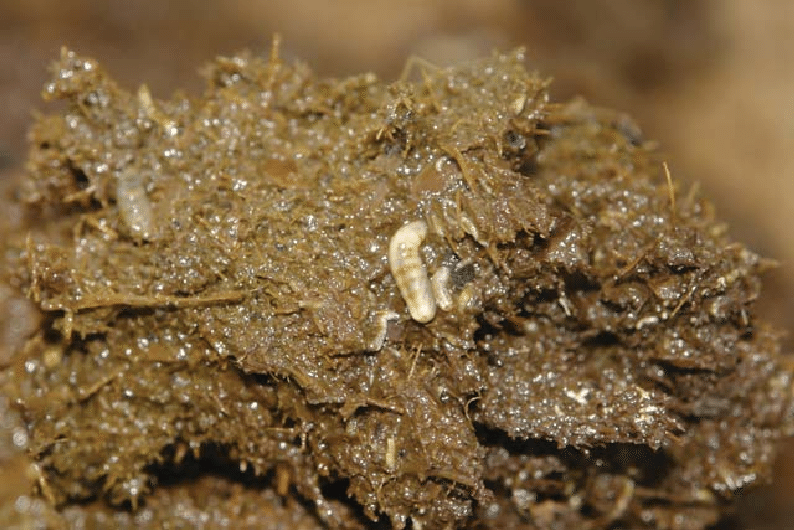
Identification
Egg: Around 1 mm in length, white, and sausage-shaped. Eggs are curved on one side and straight on the other side.
Larva: From 1.25 mm (1st instar) to an 11-12 mm (third instar) in length. It is pale yellow to creamy white in colour and it has two posterior spiracles and a mouth hook like most fly maggots.
Pupa: 4.5-6 mm in length and wider at the head end with reddish-brown colour.
Adult: 5-7 mm long, similar in size and shape of house flies. The differences of stable flies and house flies are 1) a slender, rigid, piercing and sucking proboscis (elongated sucking mouthpart, Fig.1A) and 2) seven circular black spots on the grey abdomen (Fig.1B).
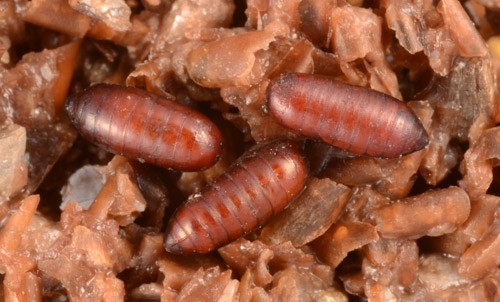
Natural habitat and behavior
The Stable fly does not restrict itself to any particular host, which means they can attack most warm blooded animals. However, cattle and horses are the main targets, but also goats, sheep, swine, donkeys and pets such as dogs and cats may be targeted. Larvae develop in moist, decaying fibrous substrates such as straw bedding, wet grass or hay, horse manure, cow manure and by-products after crop processing.
The Stable fly has a great ability to disperse locally from farm to farm and can move more than 5km away. They bite mainly on the legs, back and belly of large animals and on ears, head and legs of smaller animals. Humans often get bites on the elbows, legs and on the back of the knees. They feed in early morning and late afternoon in warm weather and they can be fully engorged (swell with blood) within five minutes without disturbance. Therefore, most of time stable flies rest on the underside of vegetation, fences and other structures near their hosts. The peak populations often occur in the spring.
Nuisance/
economical damage
The Stable fly is exposed as a great annoyance to livestock. Bites are extremely painful and the flies can be very persistent. Repeated biting behaviour of the stable fly increases the stress and reduces the feeding time of animals, leading to the weight loss and a reduction in milk production. Based on an estimation in 2012, the total impact of stable fly to U.S. cattle industries was around $2,211 million per year. The Stable fly feeds on the blood of animals and serves as mechanical vectors of different virus, bacteria, protozoa and helminths, that can cause diseases such as Surra, equine infectious anemia, brucellosis, African horse sickness, African swine fever capripox and fowlpox.
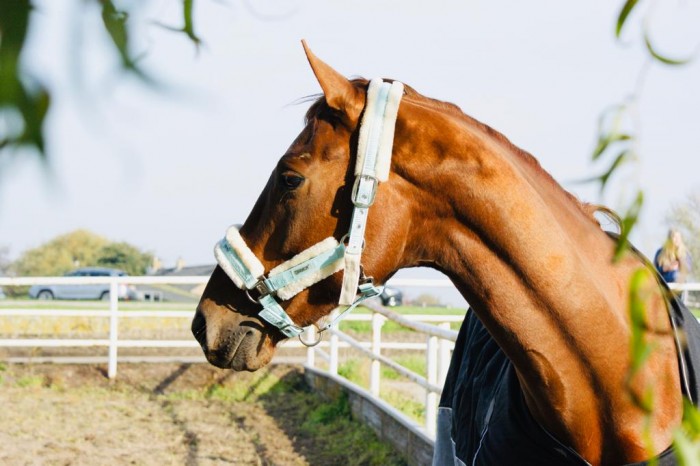
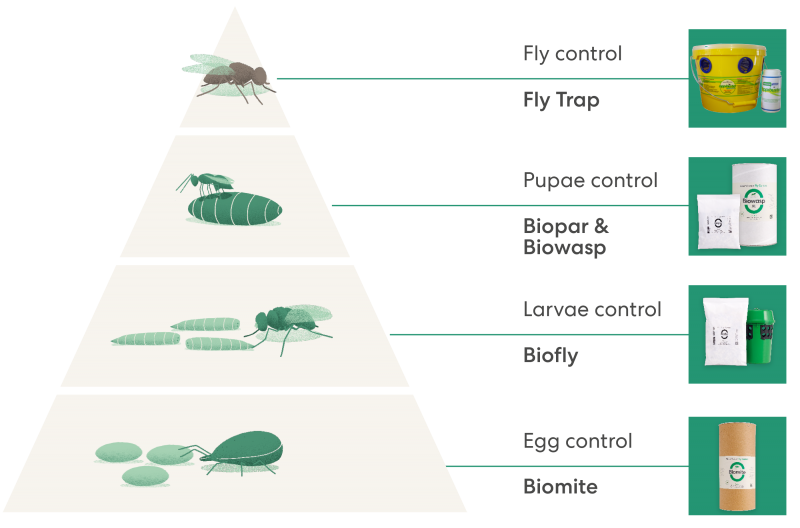
Get in touch
A successful approach to biological fly control isbased on strategically planned releases.
Pleasecontact us to discuss the possibilities.

